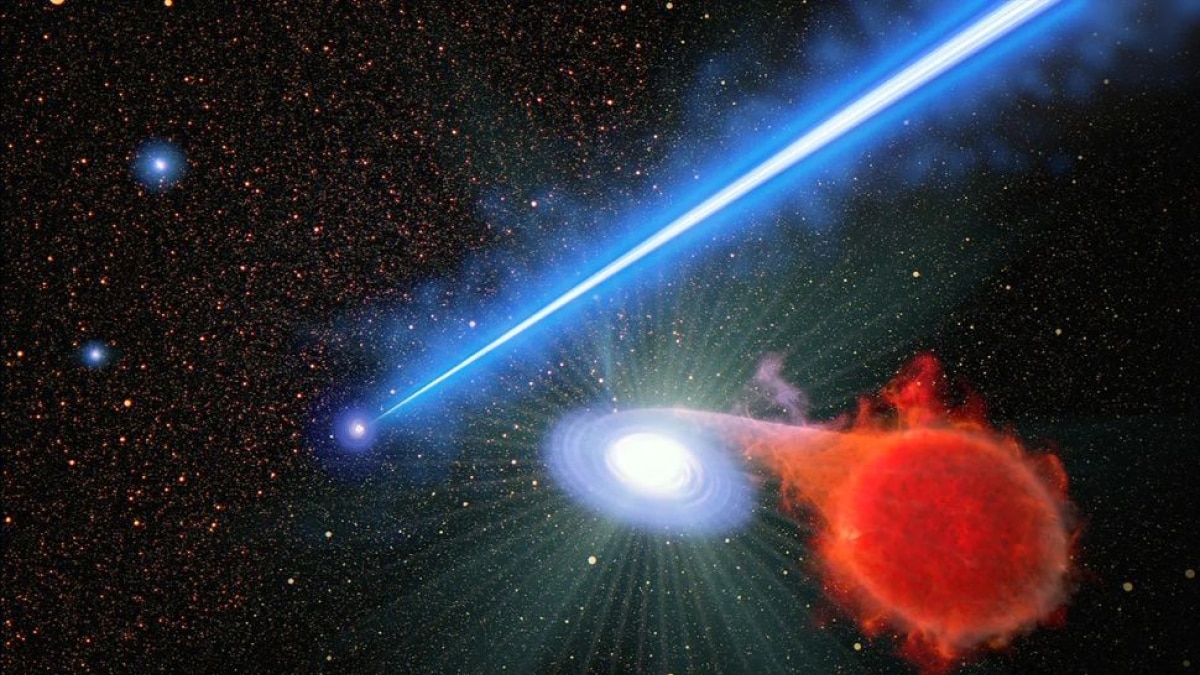Supermassive black hole jets cause nova explosions in nearby systems

At the heart of most large galaxies lies a supermassive black hole that plays a crucial role in cosmic dynamics. When black holes consume significant amounts of energy and matter, they unleash powerful plasma jets that travel at nearly the speed of light. For example, the supermassive black hole in Messier 87, located about 54 million light-years from Earth, generates jets that extend over 3,000 light-years.
The role of jets in Nova activity
Recent observations with the Hubble Space Telescope have revealed a fascinating phenomenon: binary star systems near these black hole jets are experiencing an increase in nova explosions. These systems typically consist of a normal star and a white dwarf. As the normal star expands, it can throw off material attracted to the dense white dwarf, eventually leading to a catastrophic explosion known as a nova. Research suggests that the proximity of the black hole’s jets may enhance this process, although the exact mechanism remains unclear.
Research results and future implications
Alec Lessing, an astronomer from Stanford University and lead author of the studyexpressed excitement about the findings, noting, “This means something is missing in our understanding of how black hole jets interact with their environment.” The data was collected over nine months and revealed a statistically significant correlation between the jets and increased nova activity in the area.
Conclusion: a new understanding of cosmic interactions
The study sheds light on the complex relationship between supermassive black holes and the surrounding stellar environment. As researchers continue to explore these interactions, the implications for our understanding of cosmic evolution and galaxy behavior will undoubtedly grow, paving the way for future discoveries.




